Best shrubs for containers – 12 ways to make long-lasting impact in a small space
Whether you are looking for evergreen, fragrant or compact shrubs, there are plenty that will thrive in a pot


Shrubs are key pieces of any garden design and can offer both beauty and structure to a space. Coming in a plethora of shapes, sizes, and colors, many of the most popular shrubs are suitable for growing in containers.
Some are evergreen shrubs and provide low-maintenance year-round structure and interest, while others may fill a space with fragrance and attract pollinators into the garden. Growing shrubs in containers can also help create privacy by picking fast-growing types that can provide a barrier.
There are shrubs out there suitable for all backyard spaces and growing positions. Many shrubs also now come in modern dwarf or compact varieties that make them suitable for growing in pots in even the smallest of spaces. Even if you don’t have any soil in your yard, it does not deprive you of the benefits that shrubs can bring to a garden.
Best for evergreen color
1. Japanese laurel
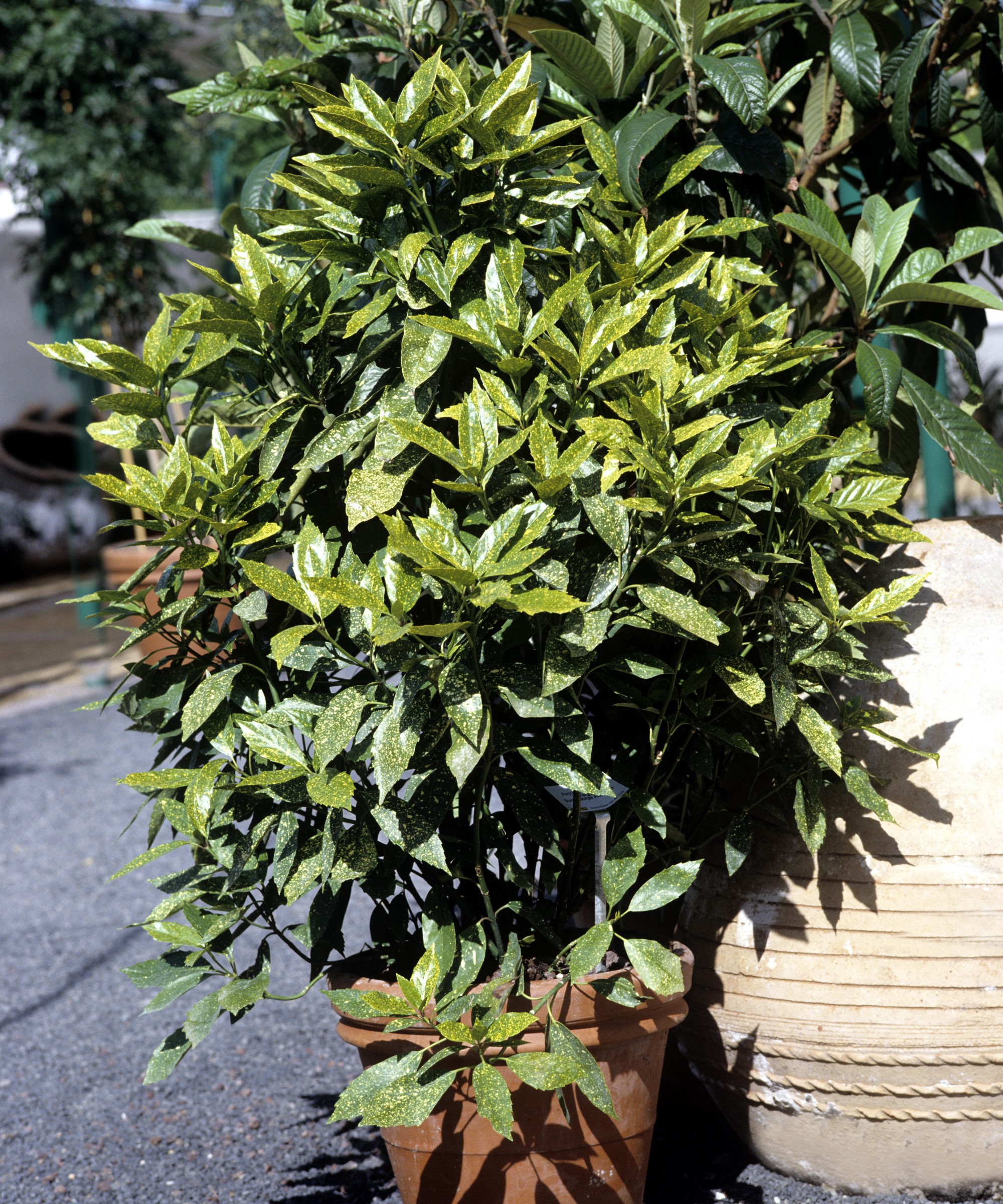
Aucuba japonica have evergreen foliage and can grow in shady spots
- Hardiness: USDA Zones 6-10
- Height: 6-10ft
- Spread: 5-9ft
Japanese laurel, also known as Aucuba japonica, is a fast-growing shrub that can tolerate both partial or full shade. It has large, thick, and glossy leaves that often feature yellow spots or patches. The shrub also has bright red berries on female plants, as long as a male plant is growing nearby.
While plants are capable of reaching 15ft, consider a dwarf plant for your container that may be more manageable. It can be used as a great shrub for privacy as well as just for its evergreen foliage.
Buy Aucuba japonica 'Gold Dust' plants at Fast Growing Trees.
2. Mexican orange blossom
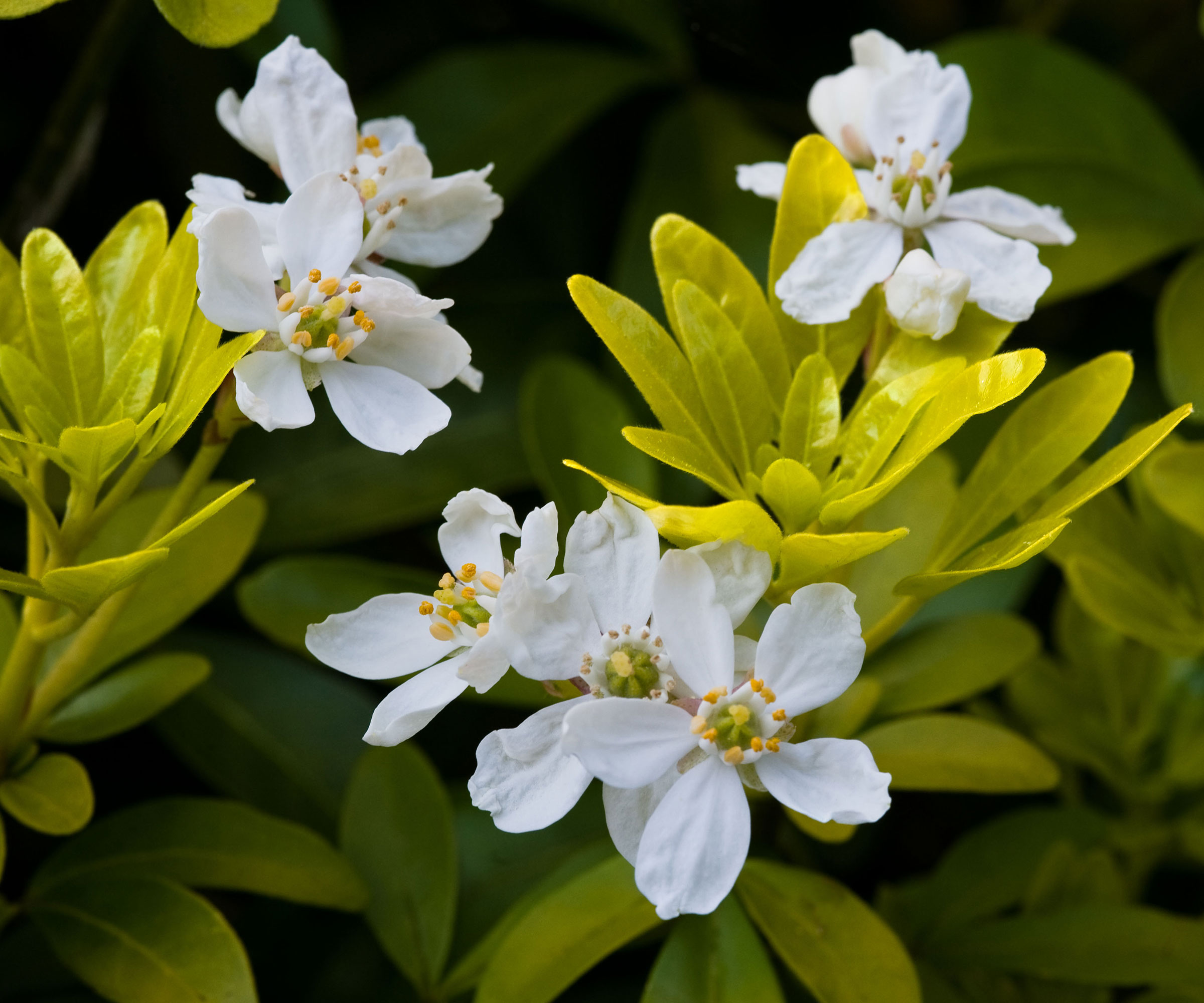
Choisya are renowned for their sweet citrus fragrance
- Hardiness: USDA Zones 7-10
- Height: 4-10ft
- Spread: 4-5ft
Mexican orange blossom, or choisya as it is also known, is one of the best shrubs for containers in milder climates. It has a strong citrus fragrance and the leaves are also renowned for the smell of oranges.
Design expertise in your inbox – from inspiring decorating ideas and beautiful celebrity homes to practical gardening advice and shopping round-ups.
It is a popular shrub that has white flowers in spring and early summer that attract numbers of bees. Smaller cultivars are perfect for growing in containers and the plants will need winter protection USDA Zone 6 against frosts.
3. Boxwood
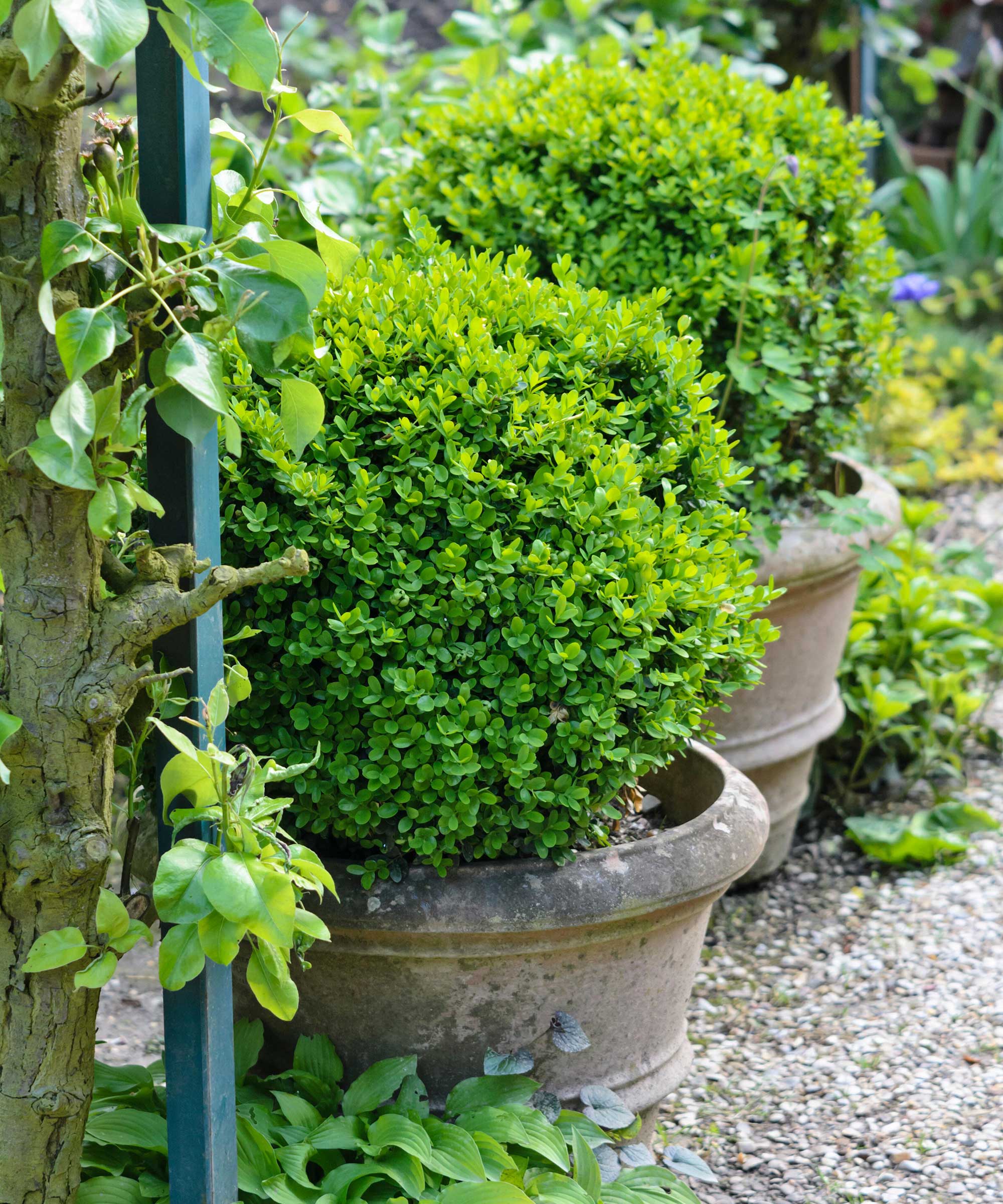
Box is a classic topiary shrub in formal gardens
- Hardiness: USDA Zones 5-9
- Height: 2-4ft
- Spread: 2-4ft
Boxwood shrubs are very slow-growing and a great plant for pots. Any container needs to be tall and wide, as the shrubs put out shallow and far-reaching roots.
These classic landscaping shrubs work best when given annual feeding and boxwood bushes are trimmed in the spring. It is well regarded as one of the best shrubs for the front of the house and also one of the top shrubs for topiary.
Buy Dwarf English Boxwood plants at Nature Hills.
Best for fragrance
4. Rosemary
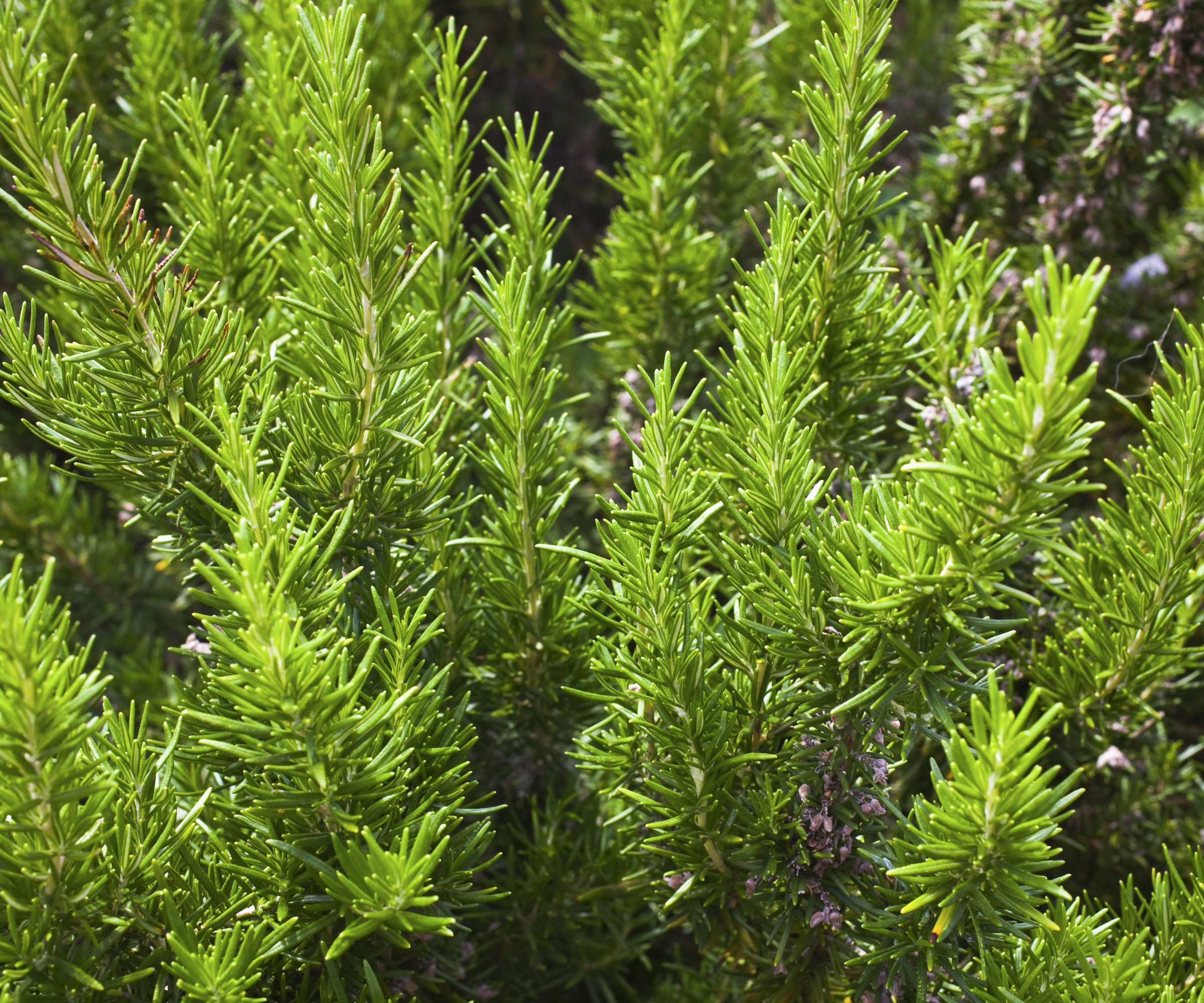
Rosemary is used in cooking, cosmetics, and as a medicinal herb
- Hardiness: USDA Zones 7-10
- Height: 2-4ft
- Spread: 2-4ft
Rosemary is a highly fragrant shrub with evergreen leaves that are commonly used in cooking, baking, cosmetics and in herbal medicines. As a Mediterranean shrub, it thrives in full sun but, when growing rosemary, you may need to provide the plant with winter protection.
It needs a pot of at least 12 inches diameter and pruning rosemary is an important annual task.
Buy Rosemary seeds and plants at Burpee.
5. Lavender

Lavender attracts lots of bees in spring and summer
- Hardiness: USDA Zones 5-9
- Height: 2-3ft
- Spread: 2-4ft
Lavender is another fragrant shrub used in kitchens and toiletries that can provide color and beautiful fragrance in a pot in your backyard. Different varieties of lavender have either silvery-grey or green leaves and the shrub’s flowers are great for attracting bees.
Lavender is generally a low-maintenance shrub for pots, providing it has very free-draining compost and lots of sunlight, around 8-10 hours per day. Hardy types of lavender can survive winter, while half-hardy types will need to be protected over the cold months. Pruning lavender can stop the shrub from getting woody and keep it in a compact shape.
Buy lavender plants at Nature Hills.
6. Daphne
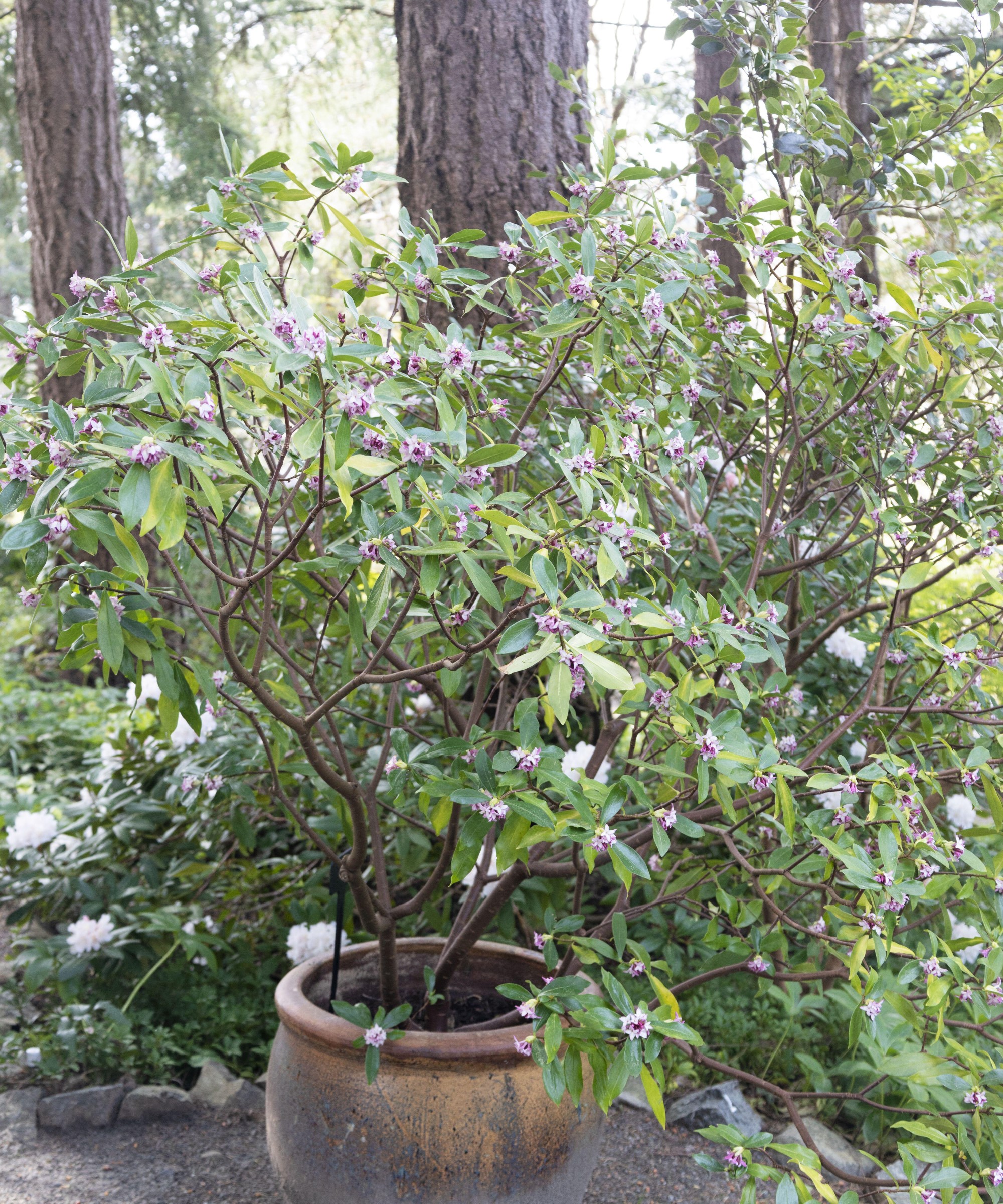
The fragrance of Daphne blooms is sweet and spicy
- Hardiness: USDA Zones 4-9
- Height: 1-5ft
- Spread: 2-6ft
There are over 70 Daphne species and these shrubs are one of the best fragrant flowers in the garden, known for their highly scented flowers that are white-to-pink and on show in spring. They are a slow-growing shrub that are happy in full sun or partial shade and want to have moisture at their roots, but not to be water-logged – therefore free-draining compost is a must.
Eternal Fragrance Daphne at Nature Hills is a small shrub that's ideal for containers.
Best for privacy
7. Jasmine

Jasmine can grow up to six feet in a year
- Hardiness: USDA Zones 4-9
- Height: Up to 10ft
- Spread: Up to 7ft
Jasmine is perfect for growing over any trellis as it is a vigorous vining shrub that can provide a dense, yet beautiful screen. The plant produces clusters of star-shaped and highly fragrant white or yellow flowers that will grow quickly.
To grow jasmine, give it plenty of sun and lots of water and it will be happy growing in a container. As an evergreen climber, it can be a terrific garden screening plant over any trellis or fence, though you may need to add wires for the plant to scramble over if you want it to cover a fence.
Buy Star Jasmine plants at Fast Growing Trees.
8. Cherry Laurel

Cherry laurel produces red berries that turn black when ripe
- Hardiness: USDA Zones 4-9
- Height: Up to 25ft
- Spread: Up to 30ft
Cherry laurel is a fast-growing plant that can work as everything from a hedge to topiary. It is a vigorous grower and has thick, glossy, dark-green leaves together with small white flowers in spring. The plant can tolerate most conditions and is fully hardy.
It needs a large planter, upwards of five gallons, good drainage, and watering only when the soil is dry. It handles pruning well and, given its fast-growing nature, it is best to prune laurel back at least once a year as it can quickly get out of control.
Buy Cherry Laurel 'Centre Court' plants at Fast Growing Trees.
9. Firethorn
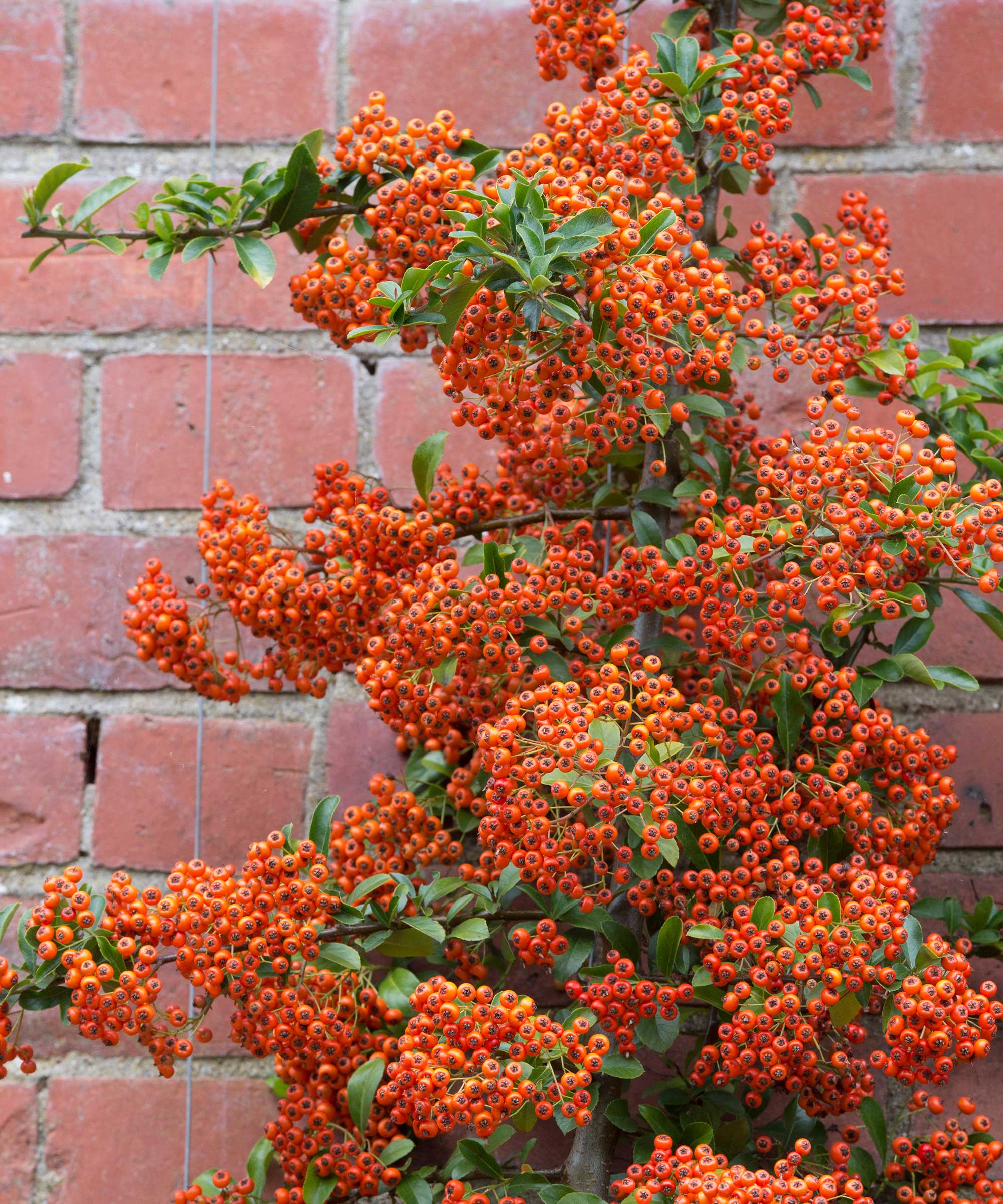
Firethorn berries are inedible and can cause stomach upsets if consumed in enough quantity
- Hardiness: USDA Zones 4-9
- Height: Up to 12ft
- Spread: Up to 12ft
Firethorn, also known as Pyracantha, is a dense growing shrub that offers interest year-round. From its white flowers in spring to bright red berries in the fall, it can quickly develop into a thick screen that offers privacy, beauty, and berries that attract lots of birds. It likes full sun but will grow happily in partial shade and is very low maintenance. Firethorn can also be grown as an espalier and is a good plant to hide a garden wall.
Buy Red Cushion Firethorn plants from Nature Hills.
Best for small spaces
10. Hydrangea

Hydrangeas need a large pot for their bulky root system
- Hardiness: USDA Zones 5-9
- Height: 2-3ft
- Spread: 3-4ft
Compact varieties of hydrangeas are fantastic shrubs to grow in pots in smaller spaces. The smaller types make it easy to grow hydrangeas in pots and they require little upkeep, barring keeping on top of watering, a good feed, and regular hydrangea pruning.
If you are planning to grow hydrangeas, they want a spot that offers dappled shade and to be protected from the elements.
At 3-feet tall and wide, the Red Sensation Hydrangea at Fast Growing Trees is a perfect hydrangea for containers.
11. Skimmia
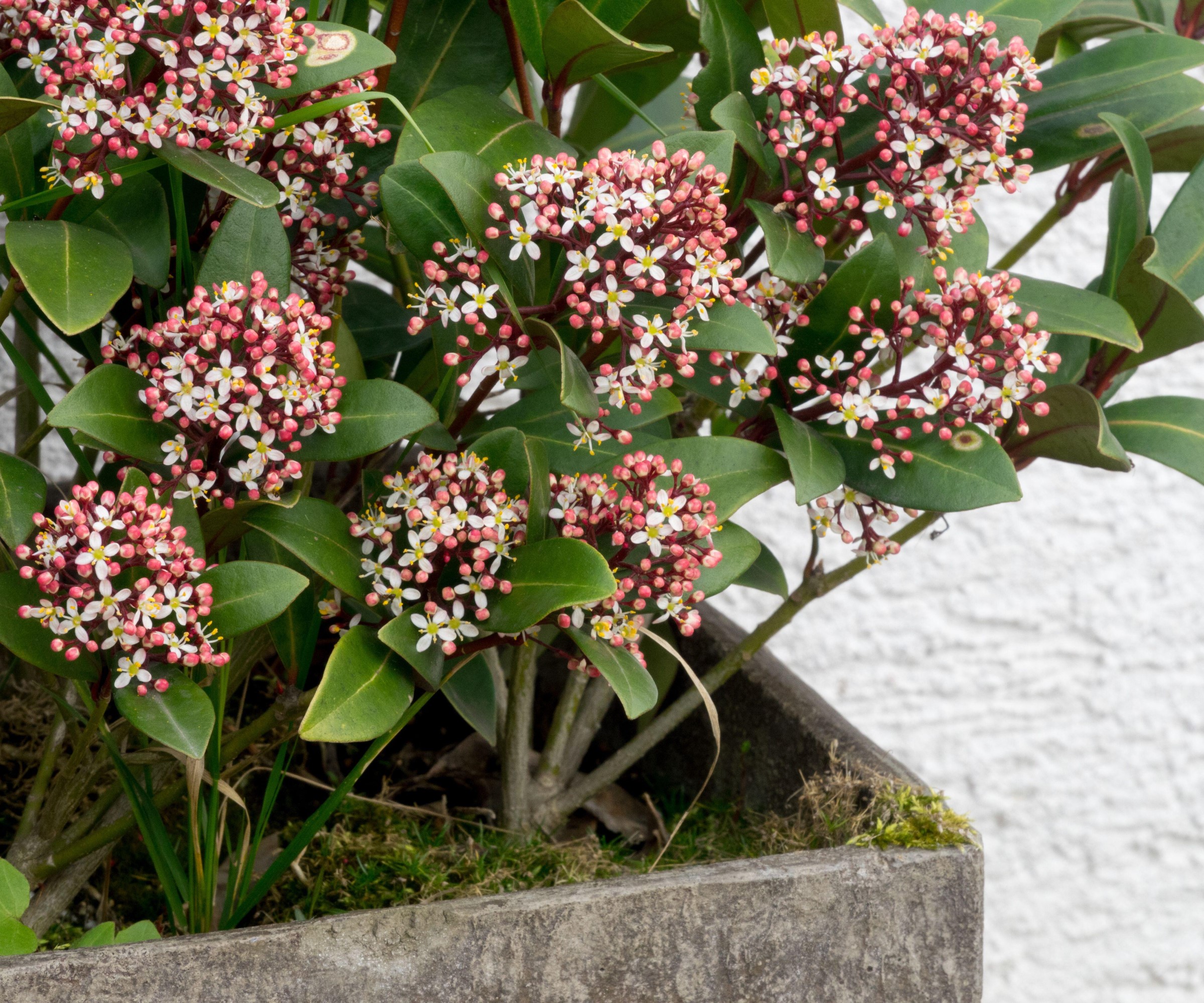
Skimmia's berries and foliage remain all winter
- Hardiness: USDA Zones 6-8
- Height: 3-4ft
- Spread: 4-5ft
Skimmia is an easy-to-maintain shrub that also comes in compact varieties perfect for pots. It is ideal for container gardening and likes to grow in shade or dappled shade.
Skimmia is a fragrant spring-flowering shrub, and many types also offer berries in fall and winter.
12. Butterfly Bush

Buddleia blooms in late summer and fall
- Hardiness: USDA Zones 5-10
- Height: 3-4ft
- Spread: 2-3 ft
While many types of butterfly bush, also called buddleia, produce large plants, there are dwarf varieties that are as beautiful and only reach 3-4ft tall – making them suitable for smaller spaces.
The large flower heads appear in late summer and are fantastic at attracting bees and pollinators into the garden. An added bonus of growing a butterfly bush is that they are a great drought-tolerant shrub.
Buddleia Pugster Pinker from Burpee is a small buddleia that grows to three feet tall and wide and is suited to containers.
There is a wealth of shrubs suitable for growing in pots, so there is no need to feel restricted when looking for container shrubs. When planting shrubs in pots, drainage is key so make sure all containers have drainage holes at the bottom and fill the pot with a free-draining compost.
Never use garden soil in pots and pay attention to watering plants, especially during periods of hot weather, and also feed them regularly to keep them healthy and performing year-after-year.

Drew has worked as a writer since 2008 and was also a professional gardener for many years. As a trained horticulturist, he worked in prestigious historic gardens, including Hanbury Hall and the world-famous Hidcote Manor Garden. He also spent time as a specialist kitchen gardener at Soho Farmhouse and Netherby Hall, where he grew vegetables, fruit, herbs, and cut flowers for restaurants. Drew has written for numerous print and online publications and is an allotment holder and garden blogger. He is shortlisted for the Digital Gardening Writer of the Year at the 2025 Garden Media Guild Awards.